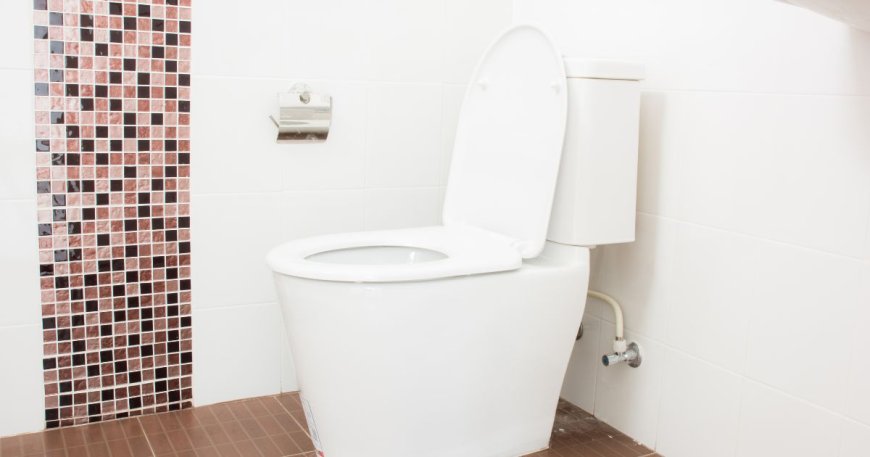Shaping the Future: Trends and Growth Prospects in the Sanitary Ware Market
The sanitary ware market has been steadily evolving, driven by technological advancements, changing consumer lifestyles, and increasing awareness of hygiene and sanitation.

The sanitary ware market has been steadily evolving, driven by technological advancements, changing consumer lifestyles, and increasing awareness of hygiene and sanitation. In 2023, the market for sanitary ware reached a substantial value of USD 12.95 billion. Projections indicate that the market will continue to grow at a compound annual growth rate (CAGR) of 5.7% during the forecast period from 2024 to 2032, ultimately reaching a projected value of USD 21.41 billion by 2032. This article explores the key factors influencing the market's growth, emerging trends, and future prospects.
Factors Driving Market Growth
- Technological Advancements: The integration of advanced technologies such as touchless faucets, smart toilets, and sensor-based bathroom fixtures has transformed the sanitary ware industry. These innovations not only enhance convenience and efficiency but also contribute to improved hygiene standards.
- Rising Disposable Incomes: Increasing urbanization and rising disposable incomes have led to higher spending on home improvement and renovation projects, including upgrading sanitary ware. Consumers are increasingly prioritizing aesthetic appeal, functionality, and durability when selecting bathroom fixtures and fittings.
- Focus on Sustainability: There is a growing demand for eco-friendly and water-saving sanitary ware products. Manufacturers are investing in sustainable materials, water-efficient designs, and energy-saving technologies to align with global environmental regulations and consumer preferences.
- Urbanization and Real Estate Development: Rapid urbanization, coupled with ongoing infrastructure development projects globally, particularly in emerging economies, is boosting the demand for modern, high-quality sanitary ware in residential, commercial, and institutional sectors.
Key Trends in the Sanitary Ware Market
- Smart and Connected Solutions: Smart bathrooms equipped with IoT-enabled devices and digital controls are gaining popularity. These include smart toilets with automated flushing systems, temperature-controlled showers, and voice-activated faucets, offering enhanced convenience and hygiene.
- Customization and Personalization: Consumers are increasingly seeking personalized sanitary ware solutions that reflect their individual preferences and lifestyles. Customizable designs, color options, and finishes are becoming standard offerings from manufacturers.
- Health and Hygiene Concerns: The global pandemic has heightened awareness of hygiene and cleanliness. As a result, there is a growing demand for antimicrobial surfaces, self-cleaning toilets, and touch-free fixtures that minimize the spread of germs and bacteria.
- Luxury and Premium Segments: The luxury segment of sanitary ware, including designer faucets, high-end bathtubs, and premium ceramic basins, continues to expand. Affluent consumers are willing to invest in sophisticated, aesthetically pleasing bathroom solutions that offer both functionality and style.
Regional Insights
- Asia-Pacific: The Asia-Pacific region dominates the global sanitary ware market, driven by rapid urbanization, population growth, and increasing infrastructure investments in countries like China and India.
- Europe: In Europe, there is a strong emphasis on sustainable building practices and eco-friendly products, influencing the adoption of water-efficient sanitary ware solutions.
- North America: The North American market is characterized by technological innovations and a preference for high-performance bathroom fixtures that enhance energy efficiency and water conservation.
Challenges and Opportunities
- Supply Chain Disruptions: The sanitary ware industry faces challenges related to raw material shortages, logistics delays, and fluctuating costs, which can impact production timelines and pricing strategies.
- Regulatory Compliance: Adherence to stringent regulatory standards for product quality, safety, and environmental impact poses ongoing challenges for manufacturers but also opens opportunities for innovation and differentiation.
Future Outlook
The global sanitary ware market is poised for significant growth in the coming years, driven by technological advancements, increasing consumer awareness of hygiene standards, and urbanization trends. Manufacturers that innovate with sustainable practices, embrace smart technologies, and cater to evolving consumer preferences are likely to thrive in this dynamic market landscape. As the market expands, there will be continued opportunities for partnerships, mergers, and acquisitions to strengthen market presence and expand product portfolios to meet diverse customer demands.

 hollandsmith157@gmail.com
hollandsmith157@gmail.com 










